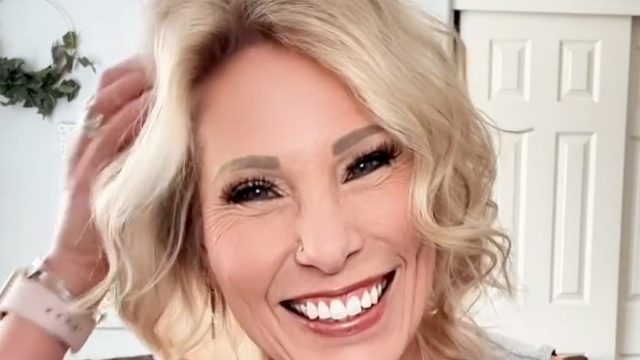50+ Fitness Coach Swears by These 8 Foods to Stay Fit and Strong

Are you trying to sustain your weight loss in 2025? It might come down to your diet, explains one expert. Lois Hughey is a weight loss warrior and coach who lost 15 pounds and kept it off. Now, she makes it her mission to help women over 50 "simplify nutrition and fitness" and regularly offers tips for sustainable fat loss in menopause on her social media feeds. In a new post she reveals the foods she eats daily to keep the weight off. "Top foods I eat on repeat as a 54-year-old nutritionist who has sustained 15lb weight loss," she wrote across the Instagram video.
She Eats "Simple" But That "Does Not Equal Boring"
"I eat most of my foods on repeat, and they don't vary that much. Keeping things simple helps with meeting calorie and macronutrient goals. I utilize a lot of seasonings and sauces to vary flavor, and I change up how I prepare my veggies based on the season," she writes in her post. "Simple does not equal boring!"
RELATED: Top Nutritionist Says Stop These 7 Diet Mistakes for Fast Results
She Prioritizes Protein, Then Fiber
"Protein is always the first thing on my mind, followed by fiber (plants!). In menopause fat intake is super important to support hormone health as well, so ditch the low fat thinking from your 20s," she writes. "Remember that for fat LOSS, the only 2 things that matter are calories and protein. To keep energy high, pay attention carbs (the quality ones) To support hormone health, eat healthy fats."
To Lose Weight and Build Muscle, Choose Lean Proteins and Eat 1 Gram Per Pound of Goal Bodyweight
"To lose weight, choose high quality LEAN proteins and eat high volume foods like greens, peppers, tomatoes, cucumber, and berries. To build muscle, eat 1g of protein per pound of goal body weight and make sure you aren't skimping on carbs. To maintain, have a nice balance of all 3 macronutrients," she says.
Here Are the Proteins She Eats on Reap
Here are the proteins she eats on repeat:
- Chicken breast
- Chicken thigh
- Rotisserie chicken
- Ground turkey/chicken
- Ground pork
- Ground bison
- Beef fillet
- Shrimp
- Extra firm, high-protein tofu
- Greek yogurt
- Cottage Cheese
- Eggs/egg white.
"I don't eat fish simply because I don't enjoy it, but it's an excellent source of protein (both canned and fresh)," she says.
RELATED: She Lost 40 Pounds and Kept It Off with These 5 High-Protein Breakfasts
Here Are the Carbs She Eats on Repeat
Here are the cards she eats on repeat:
- Oats
- Potato (white and sweet)
- Rice
- Berries
- Apples
- Cauliflower
- Broccoli
- Romaine
- Spinach
- Arugula
- Kale
- Brussels sprouts
- Asparagus
- Popcorn
- Cherries.
Here Are the Fats She Eats on Repeat
Here are the fats she eats on repeat:
- Olive oil
- Nuts
- Peanut butter and peanut butter powder
- Chia
- Avocado.
And if you enjoyed this article, take advantage of these 20 Superfoods for People Over 50.




